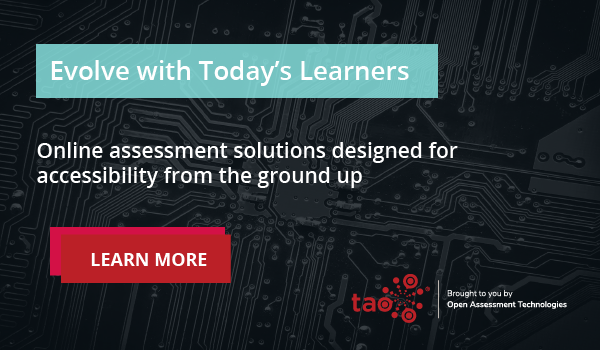As citizens of the world today, we all encounter web-based content in all its various forms, which includes text, audio, video, interactive widgets – even virtual reality. We’ve become accustomed to these forms as part of how information is distributed and consumed. Online assessments programs are increasingly including media in their tests.
There are alternatives for time-based media content (audio, video, and video with synchronized audio) like captions that all people have started to use for all kinds of reasons, including a loud environment, poor sound quality of the audio track, or sometimes you just prefer that some content includes captions because you find it helps you understand the content. Assessments that include videos with closed-captions are starting to accept that all users – not just some test takers with special needs – can benefit from using these captions.
It is time to start thinking the same way about media transcripts.
What are Transcripts?
Transcripts give a text-based alternative of time-based media by describing the visuals and activities of the video track, and a description of the sounds and dialogue of the sound track.
When creating transcripts, there is always a balance between giving the reader a full sense of what is happening (the point of the video) without providing too many details that might be unimportant. For assessment, this is particularly important, with the extra burden of not wanting to lead the candidate towards a correct (or incorrect) response. If it is not possible to create a transcript without leading the correct response, item authors should consider a different stimulus and prompt, as the item might not be able to be used across all audiences.
Transcripts are generally provided to candidates by providing a link to the transcript, which they can read and then return to the test response areas.
It is true that transcripts might not give people a full sense of what is captured in the media. You can’t experience the music, or interpret the expression on someone’s face, or the tone in their voice. Text-based content is the last line in providing accessibility of the time-based content. Additionally, transcripts allow people time to take in the content at their own pace, in their own time. Text-based content is also much easier to search, which can be a huge convenience depending on the length of the recorded media.
Why Everyone?
As many of us now do the bulk of our reading on devices that include media, we’ve become accustomed to content that includes time-based media. For content that matters to our lives, publishers make the effort to provide the alternatives for the media, including captions and transcripts.
Assessment contains content that matters to people. Results can be used to determine the direction of people’s lives. Even feeling uncomfortable or incapable while taking a test can have long-lasting effects on test takers.
If your assessment uses media, I strongly encourage you to include transcripts for use by all test takers. It’s what we’ve become accustomed to in our everyday lives. Alternatives are now just part of the media. They give access to people who can’t make use of the media AND are useful for everyone.


